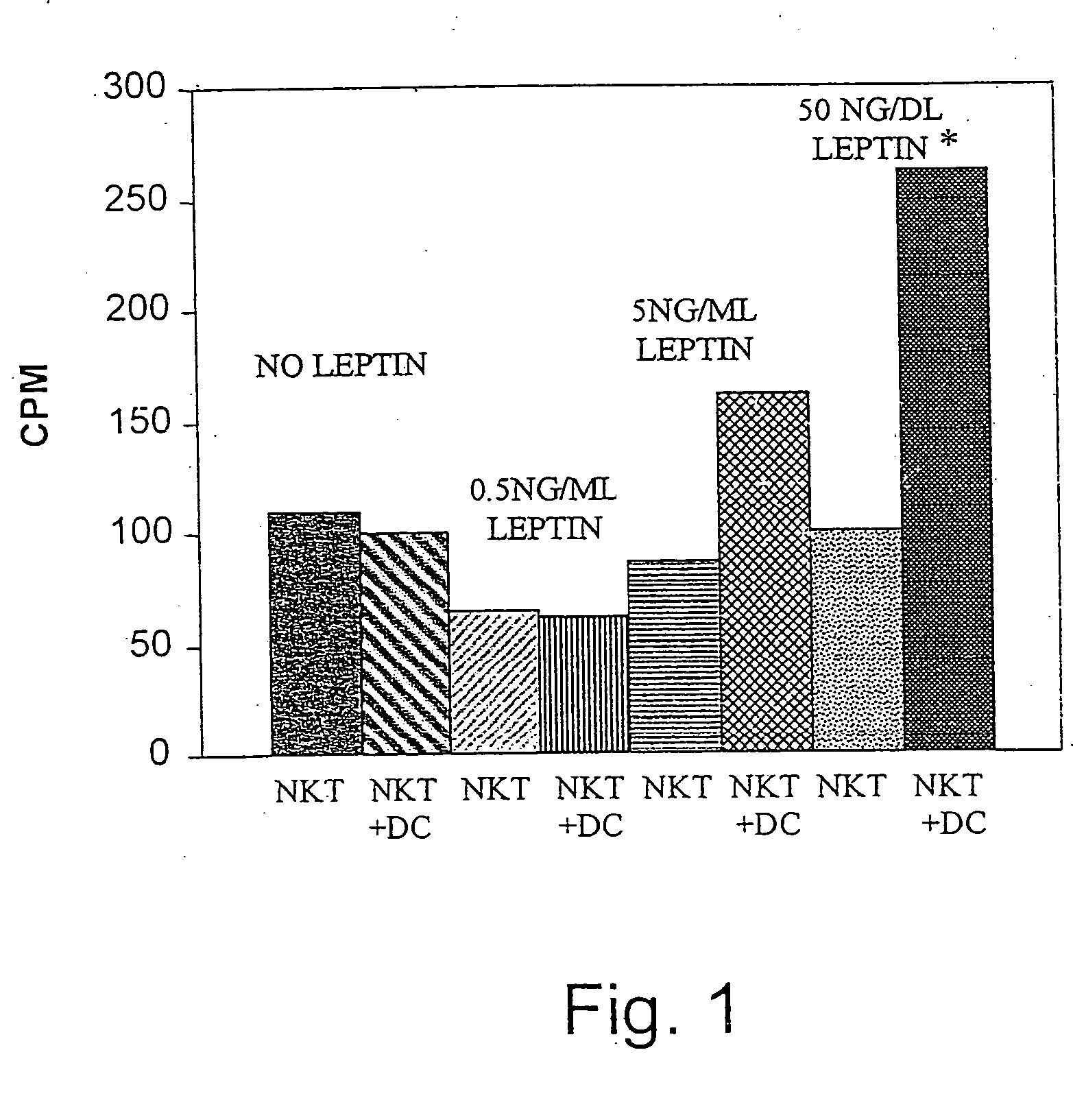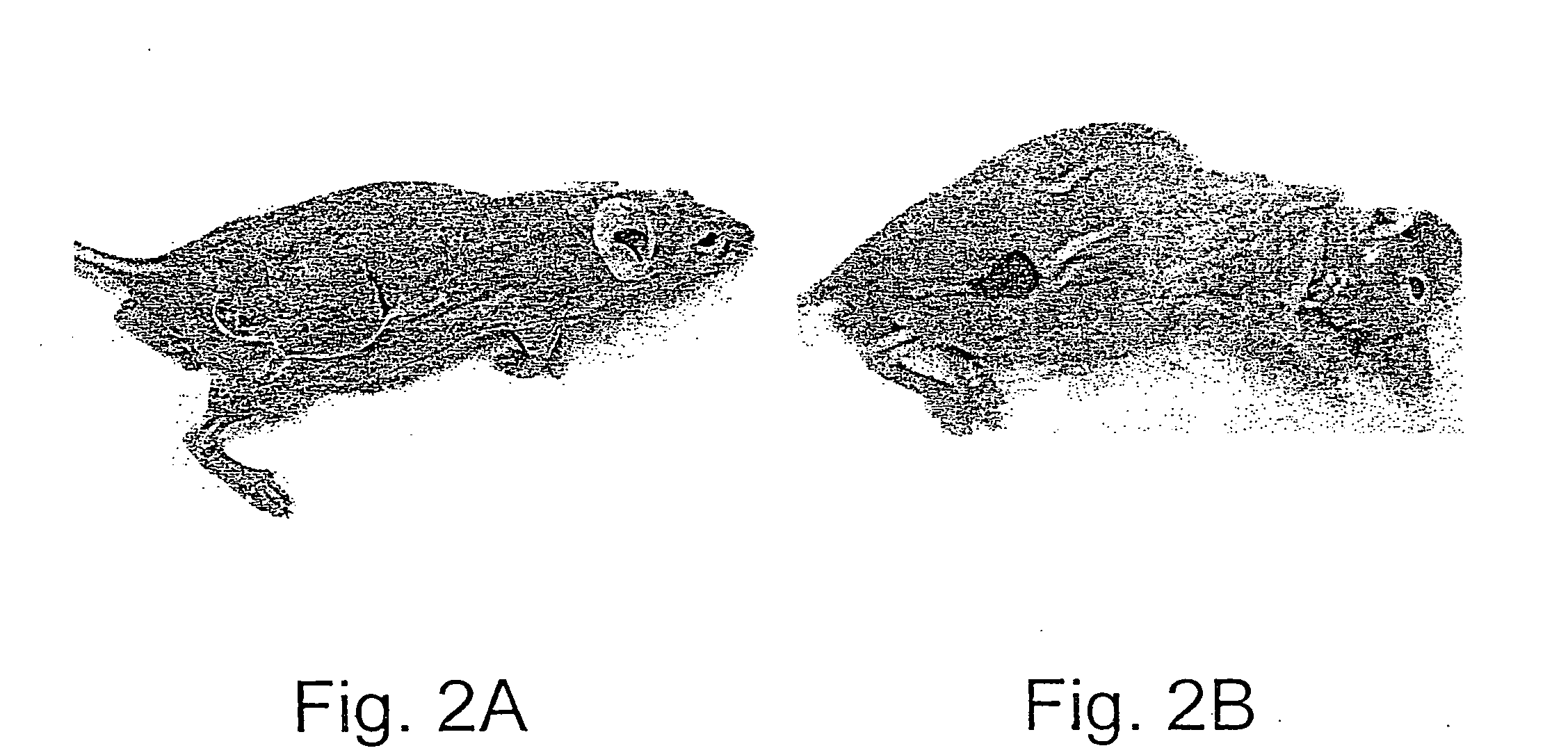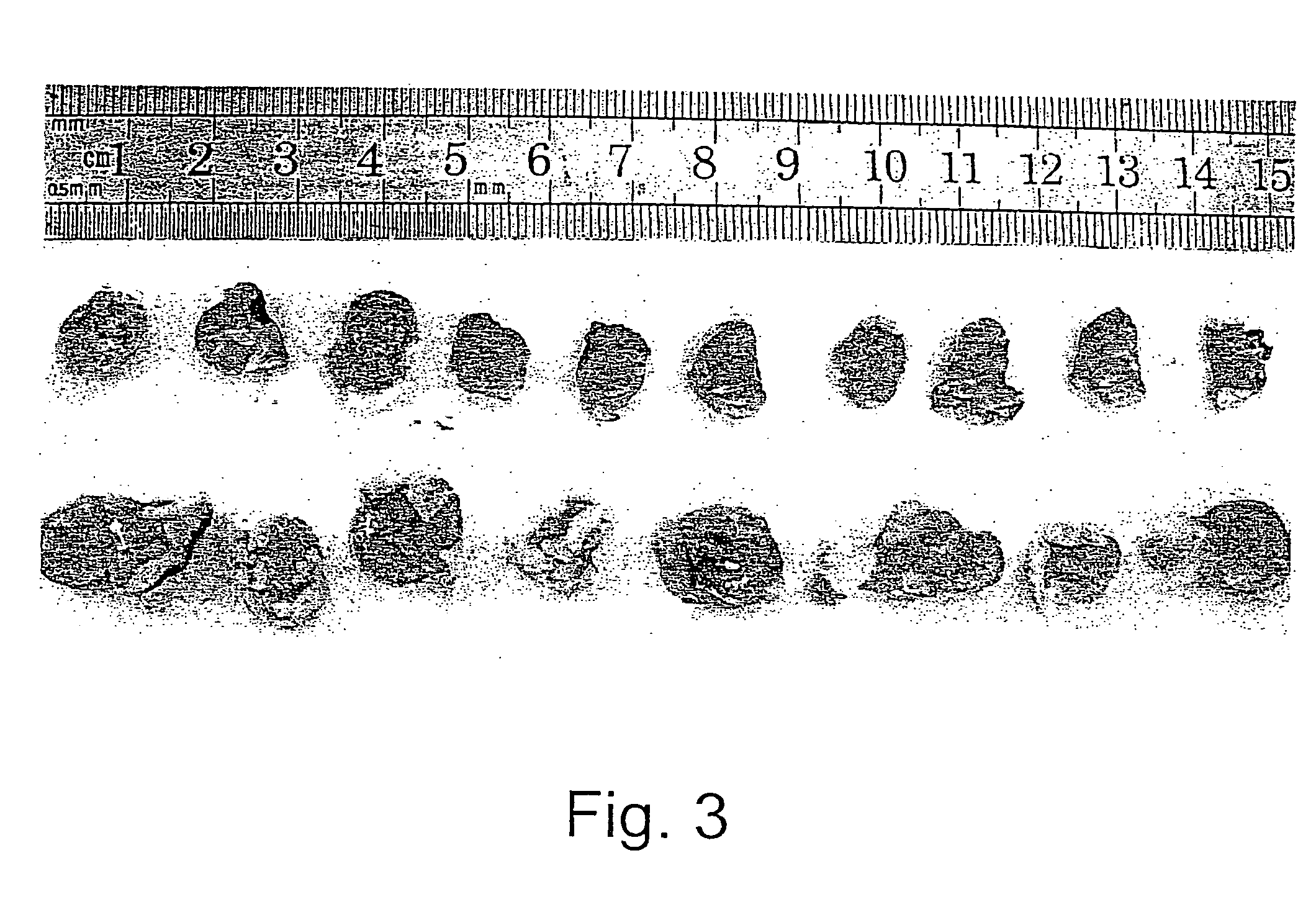Methods and uses of leptin in immune modulation and hepatocellular carcinoma
a technology of immune modulation and leptin, applied in the field of immune modulation, can solve problems such as increasing the incidence of cancer formation
- Summary
- Abstract
- Description
- Claims
- Application Information
AI Technical Summary
Benefits of technology
Problems solved by technology
Method used
Image
Examples
example 1
In-Vitro Addition of Increasing Doses of Leptin Results in Enhanced APC-Dependent NKT Lymphocyte Proliferation
[0239] In order to assert the immunomodulatory effects of leptin on regulatory cell (NKT and dendritic cell) proliferation and cytokine secretion profile, the inventors have performed a series of in-vitro experiments assessing the effect of leptin on NKT lymphocyte proliferation, particularly in the presence of HCC related antigens. NKT cells were harvested from wildtype c57bl mice using double beading techniques (anti-CD3+anti-NK1.1 & anti-CD11a, for NKT and dendritic cells, respectively), as described in Experimental Procedures. Triplicates of 1×105 NKT cells were either incubated alone, or with the addition of 1×104 dendritic cells (DC). A crude lisate of HEPA 1-6 HCC cells (made out from 5×106 cells), and increasing doses of leptin were added to each plate, as indicated in Table 2, which lists all experimental groups. The same experiment was later repeated using a huma...
example 2
Leptin Leads to Induction of HCC in T Cell Deficient Nude Mice which Results in a Substantial Increment in Tumor Growth
[0241] In vitro and in vivo experiments were next performed in order to determine the presence of leptin receptors on HCC cells grown in cell culture. Since it was previously found that enhancement of tumor cell growth by leptin occurs through activation of the JAK / STAT pathway, the inventors further examined the effect of leptin addition on expression of STAT and STAT intracellular proteins. It should be noted that in vitro, leptin receptor mRNA expression and leptin-induced expression of signal transducer and activators (STAT) 1-6, suppressor of cytokine signaling (SOCS) 1-4, and cytokine-inducible S—H protein (C15) were determined in human HEPA-3B HCC cells. Subsequently, HCC was induced in leptin-deficient ob / ob mice [Schwartz, J. et al., Clin. Invest. 98(5):1101-6 (1996)] and their lean littermates, with or without the addition of leptin, as illustrated in Ta...
example 3
Leptin Induces a Potent Pro-Inflammatory Immune Response in the Concanavalin a Hepatic Damage Model
[0246] To assess the immunomodulatory role of leptin on NKT cell dependent hepatic disease, the effect of leptin was assessed in the concanavalin A-induced hepatitis model [Watanabe, Y. et al., Hepatology 24(3):702-10 (1996)]. Wildtype c57bl / 6 mice were divided into 4 groups, as shown in Table 4. Group A and C mice were administered with two daily intraperitoneal injections of 0.5 mg / g body weight leptin for one week. On day eight, mice of groups A and B were intravenously administered with 20 mg / g concanavalin A (conA). Eight hours later all mice were sacrificed.
[0247] Leptin administration resulted in significantly exacerbated concanavalin-induced hepatitis. Group A mice featured significantly elevated serum ALT activity (4578±2226 u / l, FIG. 5) in comparison to group B mice (2035±446 u / l, P<0.05). Hepatic histology from group A mice demonstrated significantly increased hepatic nec...
PUM
| Property | Measurement | Unit |
|---|---|---|
| Time | aaaaa | aaaaa |
| Current | aaaaa | aaaaa |
| Dimensionless property | aaaaa | aaaaa |
Abstract
Description
Claims
Application Information
 Login to View More
Login to View More - R&D
- Intellectual Property
- Life Sciences
- Materials
- Tech Scout
- Unparalleled Data Quality
- Higher Quality Content
- 60% Fewer Hallucinations
Browse by: Latest US Patents, China's latest patents, Technical Efficacy Thesaurus, Application Domain, Technology Topic, Popular Technical Reports.
© 2025 PatSnap. All rights reserved.Legal|Privacy policy|Modern Slavery Act Transparency Statement|Sitemap|About US| Contact US: help@patsnap.com



